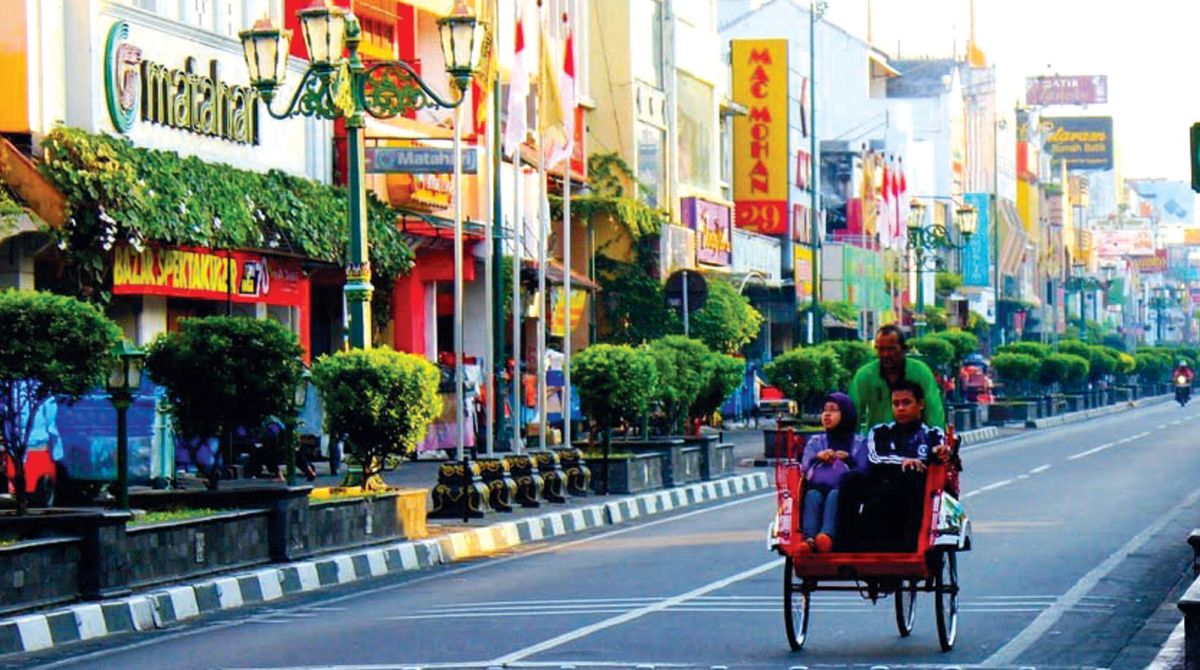As the plane was heading towards Yogyakarta, better known as the cultural city of Indonesia, two mighty mountains, emitting smoke, suddenly grabbed everybody’s attention.
The huge mountains appeared to be running parallel to our flight as its mist reached for the sky. It was a picturesque sight and whosoever happened to catch a glimpse of it, couldn’t resist taking out their camera or mobile phone to capture the moment.
Hardly had people taken a few shots, when someone indicated that the other side also offered the same beautiful view. The mountains looked like being snow-capped, surrounded by a lot of mist. One wondered how come snow in this region? Then a co-passenger explained that it was a volcano mountain, which emits smoke all the time. Explaining further, he said that Yogyakarta or Jogja (as the locals call it) is the home of Mt Merapi, which is considered the most active volcano on Earth!
It was late evening when our flight landed on the small but beautiful Adisutjipto International Airport of Yogyakarta. Interestingly, the whole airport was crowded with foreigners and locals were outnumbered. There were backpackers as well as family groups. And all had same purpose — to explore the beautiful city of Yogyakarata.
Located in South Central Java, Yogyakarta is known for its rich culture. The province has the credit for building the mighty Buddhist and Hindu temples, Borobudur and Prambanan respectively in the 8th and 9th centuries. It was ruled by the powerful Mataram kingdom in the 16th and 17th centuries, therefore, their footprints are still fresh in the city’s culture.
One can experience classical Javanese fine art and culture like batik, ballet, drama, music, poetry and puppet shows. And the most interesting part is the city is still formally ruled by a pre-colonial Sultanate, that of Ngayogyakarta Hadiningrat. It is also famous for Indonesian higher education.
And it is also the hub of batik art, which uses wax and dyeing processes on its textiles. By the time, we reached the Sheraton Mustika Yogyakarta Resort and Spa, which is just 10 minutes away from the airport, it was already dark. Therefore, while checking-in the staff suggested to start with dinner as it would end soon. But who wants to have dinner when one has such a beautiful city to explore?
But since most of the places were already closed, our tryst with the city began with their famous market street and main tourist hub — Jalan Malioboro, or Malioboro Street. It is a huge market street, lined with shops selling clothes, ornaments, handicraft and street food. It was full of people. In the market, it is hard to avoid the aroma of street food stalls or makeshift shops made of plastic roofs and walls.
Dining has its own charm there as they don’t have fancy furniture but only wooden benches. Everyone has to leave their shoes outside, away from the eating area and then dine sitting on the floor. Most of the joints serve crabs, prawns, fish and other traditional items. At the market, one could also come across young streets musicians and performers playing the guitar or drummers on its pavements.
The next day was meant for sightseeing. And it began with Kraton or the Sultan’s palace, which is the hub of the city and a few kilometres away from Molioboro. It is a sprawling palace. However, though the Sultan only holds a name not power, his palace still holds all the official meetings and function. The design of the palace follows a unique pattern — one side faces the volcanic Mount Merapi and the other towards the Indian Ocean.
They say it was built on the ancient belief of connection between the gods, humans and natural realms. Everything in the grand palace, including placement of the pavilions, the courtyards, its architecture and even the trees, have some significance with local tradition.
It also houses a museum, which has a collection belonging to the late Sultan, father of the current monarch. Just 40 km away is located the magnificent Buddhist temple, Borobudhur Temple, which was our next destination. Built in 825, it is said to be the world’s largest Buddhist monument and Indonesia’s main tourism icon. It has nine stacked platforms — six are square and three are circular — and is topped by a central dome.
Around its walls are carved no less than 2,672 relief panels as well as 504 Buddha statues. One can spend days on end appreciating the beauty of this historical masterpiece, but we were only left with an evening to explore.
Therefore, I had to keep the famous Prambanan temple — the largest Hindu temple in Indonesia and a Unesco World Heritage site — for my next visit.











